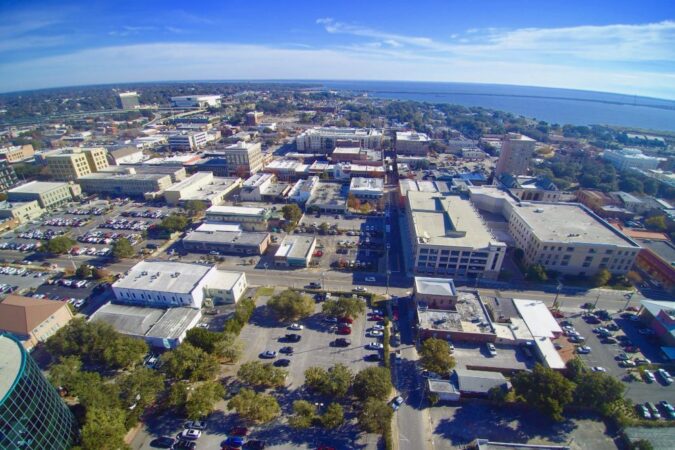
With Fiesta starting today with the Surrender of the City, I thought it would be fun to reprint this column from 12 years ago.
There are a couple of changes :
Fiesta has dropped “Five Flags” and is now “Fiesta Pensacola.”
The Mayokis are no longer an official part of the Fiesta. Read more.
Fiesta of Five Flags: Six Decades and Counting
by Jessica Forbes
5/23/2011
Present-day Fiesta largely centers on the Pensacola Crawfish Festival and Pensacola Seafood Festival, both of which the Fiesta of Five Flags Association organizes. Those events bookend a series of smaller festivities that take place mainly in May and June, and many of which date back to 1949 when Fiesta was established.
In the late 1940s, the Pensacola Chamber of Commerce was seeking a way to draw visitors to Pensacola’s then seldom-visited white beaches. The first Fiesta of Five Flags was held in June 1950 to kick off what organizers hoped would become the tourist season. The festival featured numerous events aimed at involving locals and visitors alike. Fiesta’s theme celebrates Pensacola’s history, beginning with the arrival of Don Tristan de Luna, whose fleet landed in Pensacola in August 1559.
While St. Augustine, Fla. can boast being America’s first continuously occupied city, settled by Europeans in 1565, DeLuna’s short-lived colony gives Pensacola (Santa Rosa Island, really) the distinction of being the first European settlement in the U.S. The flags of Spain, France, England, the Confederate States of America, and the United States of America have all flown over Pensacola since 1559.
Modeled in part after Mardi Gras, the festival features a masked king, or DeLuna, a queen, and a royal court. The reigning DeLuna is chosen from a group of men who are active in the city’s business and/or civic life. Queens are typically daughters of like families. The practice of selecting a younger queen is based on Debutante traditions, in which young women were formally introduced to “polite” society.
For the first several years of the festival, DeLuna, Queen, and Company would ceremoniously land at the foot of Palafox Pier. Multiple parades, a coronation at the Municipal Auditorium, and a ball were the festival’s primary events. Sporting events, beauty pageants, and market days were also held. Soapbox car races occurred in the early 1950s, and original plays penned by locals were staged.
The Treasure Hunt was first held in 1951 and originally required participants to dig on the beach for that year’s prize. Local businesses donated money toward the loot, which, in 1959, the city’s Quadricentennial Celebration, was a free beach house. Protests from beach residents in the 1970s resulted in a retooling of the hunt, which in 1980 became more of a scavenger hunt, and left the beach’s dunes in peace.
In 1958, the landing ceremony was moved to Pensacola Beach. To add a bit of historical flair, the “Mayoki Indians” were formed in 1960 to greet the Fiesta DeLuna on the beach each year. A replica of the 1743 Spanish village in Pensacola was constructed on the beach for the Quadricentennial and operated for several years as a tourist attraction and the main venue for Fiesta events on the beach.
As Pensacola’s population increased and the festival’s traditions passed the 20-year mark, small adjustments were made to refresh Fiesta in the 1970s. The practice of changing the theme annually to focus on one of the city’s five flags continued but aimed to be more authentic and educational. In the late 1970s, the Seafood Festival was introduced, and in 1989 the Crawfish Festival began.
Created at a time when the 18-year-old winner of the “bathing beauty contest” received an all-expenses paid trip to Havana, Cuba, Fiesta has continually evolved over the past sixty-two years to remain relevant and engaging. Though the number of parades and the import of the Court and Ball have diminished for many, the organization has stayed true to its original goal of drawing locals and tourists to events, which are still among the most widely attended and most anticipated in Pensacola and the surrounding area.



